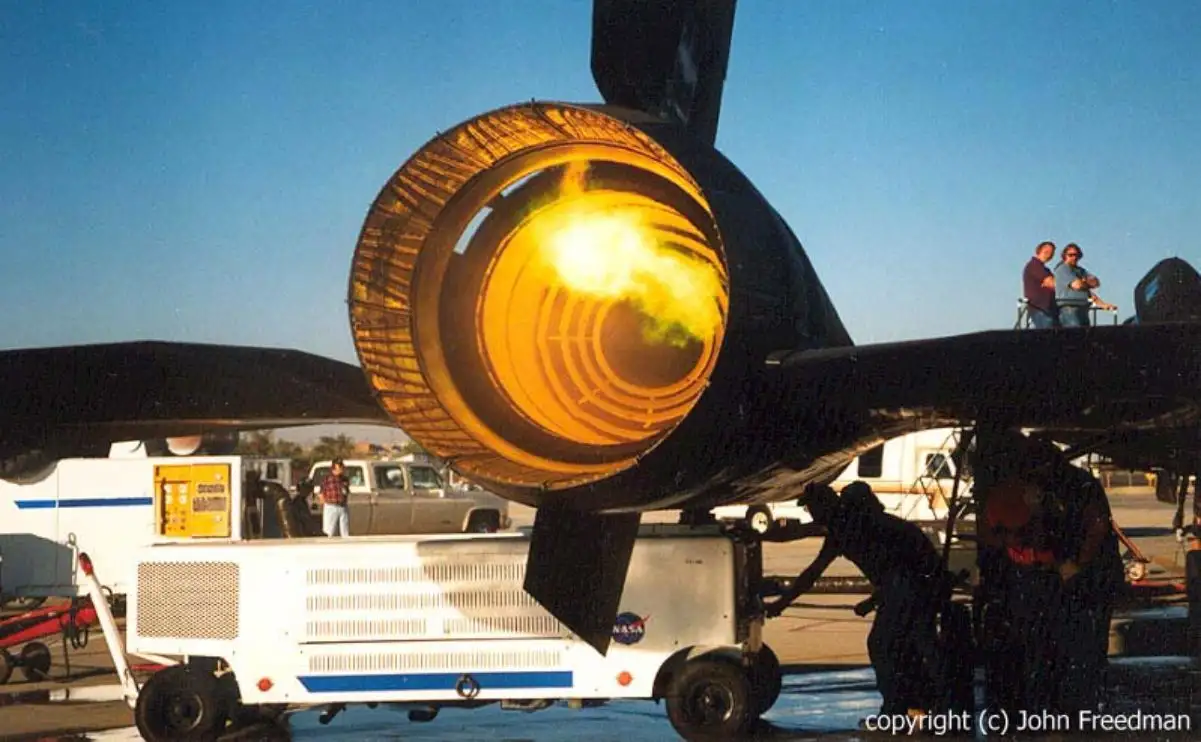Mach 3+ strategic reconnaissance aircraft
Developed from the Lockheed A-12 and YF-12A aircraft, the SR-71, also known as the “Blackbird,” was a long-range, Mach 3+ strategic reconnaissance aircraft. The 4200th (later 9th) Strategic Reconnaissance Wing at Beale Air Force Base, California, received the first SR-71 to begin service in January 1966, but the first SR-71 flight occurred on December 22, 1964.
The Blackbird was in a different category from anything that had come before. “Everything had to be invented. Everything,” as Skunk Works legendary aircraft designer Kelly Johnson recalled in an interesting article that appeared on the Lockheed Martin website.
No need for a traditional starter
For the Blackbird, the Skunk Works eliminated a conventional starter in order to reduce weight. They therefore figured out a different way to start the SR-71.
Former Blackbird pilot Richard H. Graham explains in his book SR-71 Revealed The Inside Story;
‘The high flashpoint brings up another problem. Most jet engines use igniter plugs, nothing more than a very hot spark plug, if you will. Using these igniter plugs they used with the JP-7 and just drowns it out, it won’t ignite. Kelly [Johnson] put his engineers to work, and he said, ‘OK, gentlemen, how are we going to start this?’ They came up with a very unique way. Triethylborane – TEB for short. Each engine has a one-and-a-quarter pint. If I had it in a squirt gun and I squirted it into the atmosphere, it would go Kaboom! – it explodes with contact with the atmosphere. And that’s how we started the engines. As the engines rotate, at the right time, it sprays this amount of TEB into the turbine section, which goes kaboom, which in turn lights the engine. When you take the throttles up into the afterburner, it puts this metered amount of TEB in that lights up the JP-7. You get 16 shots for each engine.’
The most dangerous material to start the SR-71 Blackbird engines

Mounted on each engine was a sealed tank, inerted with nitrogen gas and filled by maintenance with 600 cc of TEB before each flight.
Former SR-71 Blackbird pilot David Peters explains: ‘An interesting note to this is the transport of it. If we landed away, servicing had to be hauled to our location. The NTSB lists TEB as the following most dangerous material, one step below fissionable nuclear material. The folks that handled this stuff were highly trained and good.’
Check out Habubrats SR-71‘s Twitter profile, SR71Habubrats‘s Instagram profile, and Born into the Wilde Blue Yonder Habubrats‘s Facebook page for further Blackbird photos and stories.
Photo by John Freedman and User:Jaydec via Wikipedia

